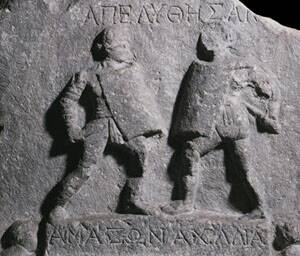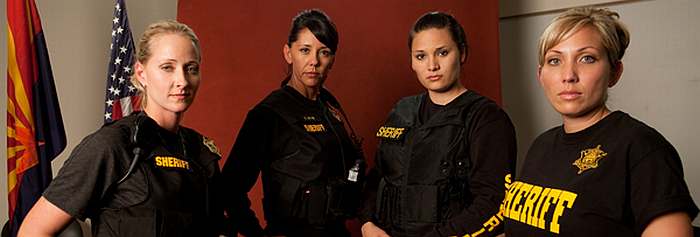 ★★★★
★★★★
“More Mums with Guns.”

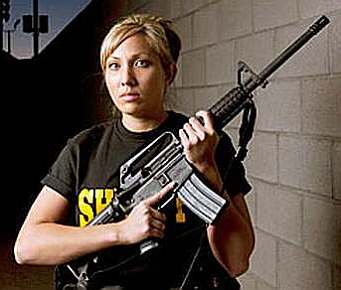 The second series of TLC’s “mommy cops” reality series struck close to home, centered as it was on Phoenix. It didn’t come as much surprise as our local sheriff, Joe Arpaio, is infamous locally as a media whore, who wastes no opportunity for self-promotion, and is a sharply-divisive figure locally, adored and loathed by about equal parts of the population. We wondered how long it would take before Joe slimed his way onto the screen: six minutes into the first episode, we had our answer. Fortunately, this was more of a blip, and our fears of an Arpaio-centered show proved largely unfounded [see the execrable Smile… You’re Under Arrest for how bad this could have been].
The second series of TLC’s “mommy cops” reality series struck close to home, centered as it was on Phoenix. It didn’t come as much surprise as our local sheriff, Joe Arpaio, is infamous locally as a media whore, who wastes no opportunity for self-promotion, and is a sharply-divisive figure locally, adored and loathed by about equal parts of the population. We wondered how long it would take before Joe slimed his way onto the screen: six minutes into the first episode, we had our answer. Fortunately, this was more of a blip, and our fears of an Arpaio-centered show proved largely unfounded [see the execrable Smile… You’re Under Arrest for how bad this could have been].
The series was an improvement on its predecessor, and not only because of the thrill of seeing local places [though we soon realized the editors played fast and loose with geography, consecutive shots often being miles apart]. The Florida show was actually quite depressing in many ways; seemed like the majority of crimes were a) drug-related, and b) ethnic. Here, there’s a good deal more variety: it seems like the sheriff’s office spent as much time serving warrants to deadbeat dads as anything [this is one of Sheriff Joe’s tactics to pad his crime numbers and make him look good, because those are piss-easy warrants to serve, compared to those involving real criminals. Again, see S…YUA]
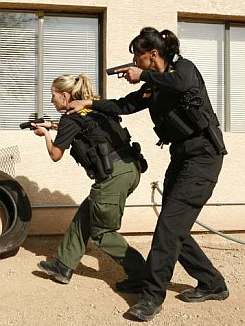 As notable as what is shown, is what was not included. The MCSO are notorious for “crime sweeps,” which are much about illegal immigration, a massive hot-button political issue in Arizona, as any other offense. However, these have come in for criticism from civil liberties groups, and there was not a mention of these high-profile activities on the show. The only real coverage of the topic was in chasing down “coyotes”, those who smuggle illegals across the border. On the other hand, whiny, liberal media outlets such as the Phoenix New Times bleat “Can’t The Tourism Board Shut This Show Down?” Actually, I like the New Times in general, and we’re good friends with one of their reporters, but the paper’s politics are a different issue entirely.
As notable as what is shown, is what was not included. The MCSO are notorious for “crime sweeps,” which are much about illegal immigration, a massive hot-button political issue in Arizona, as any other offense. However, these have come in for criticism from civil liberties groups, and there was not a mention of these high-profile activities on the show. The only real coverage of the topic was in chasing down “coyotes”, those who smuggle illegals across the border. On the other hand, whiny, liberal media outlets such as the Phoenix New Times bleat “Can’t The Tourism Board Shut This Show Down?” Actually, I like the New Times in general, and we’re good friends with one of their reporters, but the paper’s politics are a different issue entirely.
But outside of the the “Ooh! Been there!” local interest, I think the characters here were generally a slightly more personable bunch. As before, it centres on four women – again, mostly single moms, which makes me wonder whether the job attracts them, or leads to marital stress. There’s Deputy Amie Duong, who is the “Shelunda” of the series – when you see her arrive, you know a domestic dispute isn’t far behind. There’s Deputy Kelly Bocardo, the token minority representative, whose three brothers (among her 14 siblings, apparently!) also work for the department. And there’s Detective Lindsey Smith, whose accemt appears to drift, chameleon-like, depending on to whom she’s speaking.
 Finally, there’s Detective Deborah Moyer (right), who is completely marvellous, and the main reason to watch the show. A 19-year veteran, we’d be entirely happy if the show was 100% about her. While the other women occasionally seem very scripted when they are talking to the camera, that isn’t the case with Moyer: there’s a definite sense that what you see is what you get with her. While her policing style may not be “by the book” – in one episode, she basically arrests a teenage girl for failing to hug her father – her reactions are entirely natural and certainly had us nodding in approval more often than not. She just comes across as being very normal: when she encounters a young perpetrator, she tends to think about her own kids of the same age.
Finally, there’s Detective Deborah Moyer (right), who is completely marvellous, and the main reason to watch the show. A 19-year veteran, we’d be entirely happy if the show was 100% about her. While the other women occasionally seem very scripted when they are talking to the camera, that isn’t the case with Moyer: there’s a definite sense that what you see is what you get with her. While her policing style may not be “by the book” – in one episode, she basically arrests a teenage girl for failing to hug her father – her reactions are entirely natural and certainly had us nodding in approval more often than not. She just comes across as being very normal: when she encounters a young perpetrator, she tends to think about her own kids of the same age.
But all the police here are more interested in “justice” rather than the letter of the law. That’s in contrast to the Broward County show, where there was far too much entrapment going on: I don’t think the police should be involved in creating crime. It was also notable that the cops in Arizona seemed to have much more discretion. If you were respectful and polite (the New Times would no doubt say “subservient”), you stood a much better chance of getting off with a warning than if you gave them attitude. I’ll file that away for the next time I encounter law-enforcement here, though one speeding ticket in a decade hardly makes me a habitual offender. Still, if we got to meet Detective Moyer as a result, we might considar a life of crime!
What the show did best of all was make us appreciate that, behind the grandstanding, publicity-seeking nonsense of Sheriff Joe Arpaio, are a number of dedicated, hard-working officers who have a very difficult job to handle. They’re not Robocops, and so are both imperfect and fallible, but law-enforcement personnel are human, just like you and me. Being reminded of this fact is something that is never a bad thing.





 Khaled became internationally famous in 1969, for hijacking a TWA flight from Rome to Athens, diverting it to Damascus, where it was blown up – after everyone had been taken off [this was a kinder, gentler era of terrorism]. She then underwent plastic surgery to conceal her identity, and the following year tried to hijack another plane. However, air marshals shot her colleague and captured Khaled, who was taken into custody in London, only to be released soon afterwards as part of a prisoner exchange. She returned to the Middle East, her sky-piracy career at an end, but became an icon of the Palestinian movement, and remains active in it to this day, despite travel restrictions. The Guardian wrote of Khaled in 2001,
Khaled became internationally famous in 1969, for hijacking a TWA flight from Rome to Athens, diverting it to Damascus, where it was blown up – after everyone had been taken off [this was a kinder, gentler era of terrorism]. She then underwent plastic surgery to conceal her identity, and the following year tried to hijack another plane. However, air marshals shot her colleague and captured Khaled, who was taken into custody in London, only to be released soon afterwards as part of a prisoner exchange. She returned to the Middle East, her sky-piracy career at an end, but became an icon of the Palestinian movement, and remains active in it to this day, despite travel restrictions. The Guardian wrote of Khaled in 2001, A fascinating and complex character, it can’t be said that much of the complexity – both hers, and the entire Middle East situation – comes across in this documentary, less than a hour long. You get a quick romp through her early history, her family’s departure from then-Palestine just after World War II, both hijackings, and then we leap forward to the present day, where she’s a mother and works for a political group. There are some interesting moments, such as where she draws a line between what she did, and the 9/11 hijackings: “I don’t agree with the murders of civilians, no matter where in the world”, and she’s been consistent in expressing that. More probing questions would have been welcome: instead, Makboul – brought up in Sweden by her Palestinian parents – admits to having been basically a fan. She interviews others involved in the hijacks, such as a stewardess and the crew, and follows Khaled on a trip to the Chatila refugee camp in the Lebanon, but the film ends abruptly, just as she asks Khaled about the negative image of Palestinians as terrorists that she helped create.
A fascinating and complex character, it can’t be said that much of the complexity – both hers, and the entire Middle East situation – comes across in this documentary, less than a hour long. You get a quick romp through her early history, her family’s departure from then-Palestine just after World War II, both hijackings, and then we leap forward to the present day, where she’s a mother and works for a political group. There are some interesting moments, such as where she draws a line between what she did, and the 9/11 hijackings: “I don’t agree with the murders of civilians, no matter where in the world”, and she’s been consistent in expressing that. More probing questions would have been welcome: instead, Makboul – brought up in Sweden by her Palestinian parents – admits to having been basically a fan. She interviews others involved in the hijacks, such as a stewardess and the crew, and follows Khaled on a trip to the Chatila refugee camp in the Lebanon, but the film ends abruptly, just as she asks Khaled about the negative image of Palestinians as terrorists that she helped create. You wouldn’t know it to look at the sleepy Hungarian village of Nagyrév [population: 872], but there was a time between the world wars when this was the murder capital of the world. Between 1914 and 1929, an estimated
You wouldn’t know it to look at the sleepy Hungarian village of Nagyrév [population: 872], but there was a time between the world wars when this was the murder capital of the world. Between 1914 and 1929, an estimated 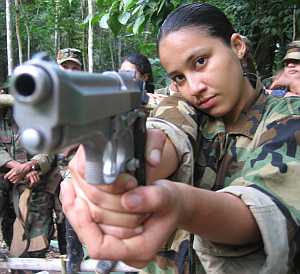 Not to be confused with the (rather tedious, IMHO) bunch of New York feminist artists, this is about Isabel, the well-educated daughter of a middle-class family, who opts to toss it all away and go into the jungles of Colombia to fight the revolution with FARC, the insurgents who have been rebelling against the government for more than 40 years. She undergoes training, both political and military, and has to adapt to an environment radically different from the one she knew before. It’s not always successful, and you wonder how she’s ever going to become a “freedom fighter” when she can’t even take part in the slaughter of a cow. [shown, below right – PETA activists will
Not to be confused with the (rather tedious, IMHO) bunch of New York feminist artists, this is about Isabel, the well-educated daughter of a middle-class family, who opts to toss it all away and go into the jungles of Colombia to fight the revolution with FARC, the insurgents who have been rebelling against the government for more than 40 years. She undergoes training, both political and military, and has to adapt to an environment radically different from the one she knew before. It’s not always successful, and you wonder how she’s ever going to become a “freedom fighter” when she can’t even take part in the slaughter of a cow. [shown, below right – PETA activists will 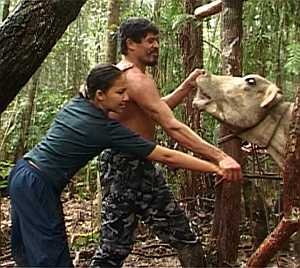 e the film-makers didn’t want to go down that avenue, and since they were out in the jungle, with a group of heavily-armed insurgents, I can hardly blame them for letting that angle slide. Instead, it lets the film speak for itself, and FARC does sometimes come across as little better than kids playing soldiers: one, particularly memorable part of the training, consists of recruits running around, waving wooden guns about and shouting “BANG!” at imaginary opponents. They also have a startlingly bad ‘national anthem’, which sounds more like the fight song from a third-rate community college.
e the film-makers didn’t want to go down that avenue, and since they were out in the jungle, with a group of heavily-armed insurgents, I can hardly blame them for letting that angle slide. Instead, it lets the film speak for itself, and FARC does sometimes come across as little better than kids playing soldiers: one, particularly memorable part of the training, consists of recruits running around, waving wooden guns about and shouting “BANG!” at imaginary opponents. They also have a startlingly bad ‘national anthem’, which sounds more like the fight song from a third-rate community college.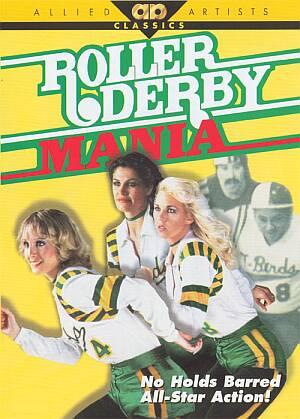 This dates back to 1986, which is a little odd, as the sport was pretty much in one of its down-turns at the time – the excesses of RollerGames were still a couple of years away at that point. This isn’t probably the best place for a novice to start, as there’s no explanation at all about the sport, since it assumes you know what’s going on, how bouts are staged, scored and what the rules are . There’s a little about the history (including a cute song from the 1940’s), but it’s mostly action featuring the Los Angeles T-Birds.
This dates back to 1986, which is a little odd, as the sport was pretty much in one of its down-turns at the time – the excesses of RollerGames were still a couple of years away at that point. This isn’t probably the best place for a novice to start, as there’s no explanation at all about the sport, since it assumes you know what’s going on, how bouts are staged, scored and what the rules are . There’s a little about the history (including a cute song from the 1940’s), but it’s mostly action featuring the Los Angeles T-Birds.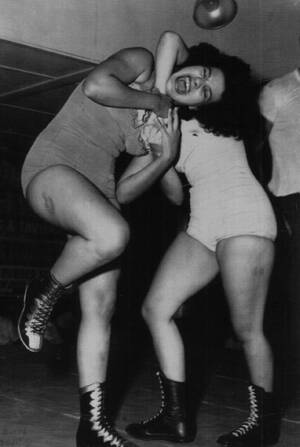
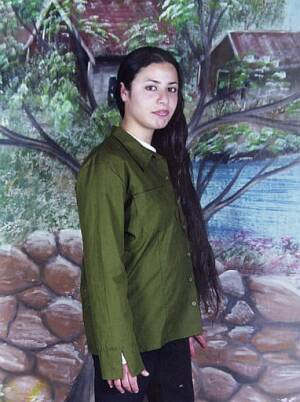
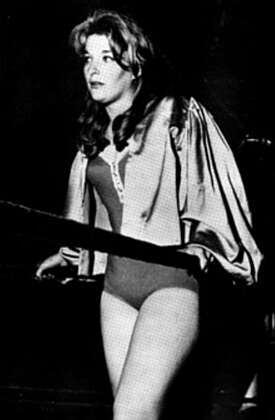 Despite the title, and the fact that Vivian Vachon is the most featured wrestler, the portion of this film which has much to do with women’s wrestling is actually rather small. It’s more a general overview of wrestling and it’s fans, during a strangely innocent era (the early 1970’s), before Vince McMahon dominated, when it still worked to give the illusion of a genuine sport.
Despite the title, and the fact that Vivian Vachon is the most featured wrestler, the portion of this film which has much to do with women’s wrestling is actually rather small. It’s more a general overview of wrestling and it’s fans, during a strangely innocent era (the early 1970’s), before Vince McMahon dominated, when it still worked to give the illusion of a genuine sport.